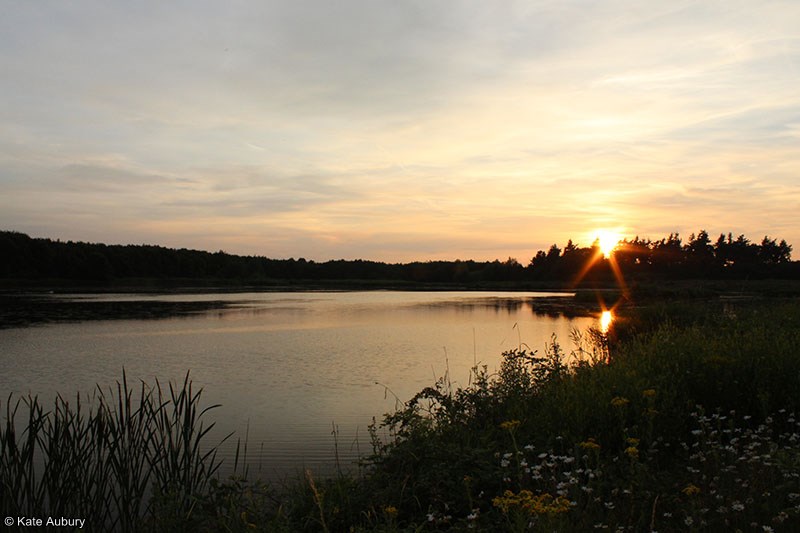Kemerton Lake Nature Reserve is KCT’s flagship reserve. It is a 46.5 acre (18.8 ha) wetland complex created out of a former gravel working, situated between the villages of Bredon, Westmancote, Kemerton and Kinsham. The reserve is a designated Local Wildlife Site, and has a diverse range of habitats including a 16 acre (6.5 ha) lake, pools, seasonal wet scrapes, reed beds, grassland, and land specially cultivated for arable plants. The reserve is surrounded by 111 acres (45 acres) of native woodland and arboretum which are not part of the reserve, but which make an important contribution to the habitat mosaic. KCT manages the reserve under a long lease.
Flora and Fauna
More than 170 species of birds have been recorded at the reserve, including more than 20 NERC Section 41 (UK BAP) species. It is the top site in Worcestershire for wintering jack snipe and has large roosts of starling and reed bunting in the reed beds. The lake also plays host to large flocks of wintering wildfowl, including, widgeon, teal and pochard. The reserve is one of the top two sites in Worcestershire for dragonflies and damselflies, with 23 different species recorded. It is also one of the best regional sites for mining bees. The reserve has a rich and varied flora with rarities such as clustered bellflower, sea clubrush, autumn ladies’ tresses, and southern marsh x common spotted orchid hybrid (in total, nine species of orchid are found in and around the reserve). The arable plant area includes rare specialists such as wall bedstraw and night-flowering catchfly. At least nine species of bat, including lesser horseshoe, are found in the reserve and neighbouring woodland. Otters are regularly recorded in the wetland areas.
Access Information
OS grid reference: SO 9380 3620
Kemerton Lake Nature Reserve is accessible via a public footpath (BX-527), which can be reached on foot from all of the surrounding villages. Visitors from further afield are advised to park in Kinsham and join the footpath where it meets Cheltenham Road at the northern edge of the hamlet. A 350 metre walk brings you to woodland bordering the reserve, and after a short woodland walk, the public footpath crosses the reserve. There are additional permissive paths that are restricted to members of KCT. The permissive paths are for walkers only, we regret we cannot allow cycling or running as the paths are not suitable and these activities could also be detrimental to the wildlife. There are three bird watching hides open all year round. Two are member-only, while our Water's Edge Hide is open to all visitors 24/7, and is accessible directly from the public footpath. We regret that in order to avoid disturbance to wildlife, dogs are not permitted on the permissive paths or in the hides on the reserve, and we ask that they are kept on a lead on the public footpath where it crosses the reserve. Please download a copy of the map for further details.
The reserve is a beautiful place to visit all year round. Some highlights include the extraordinary mating displays of great crested grebes in March; cuckoos calling in May; and the spectacular starling roosts in early winter.
Activities for Kids: we have seasonal activity sheets available with ideas for fun activities for children to do when visiting the reserve. Clink on the links below to view or print them.
Spring Activity Sheet
Summer Activity Sheet
Autumn Activity Sheet
Winter Activity Sheet |











